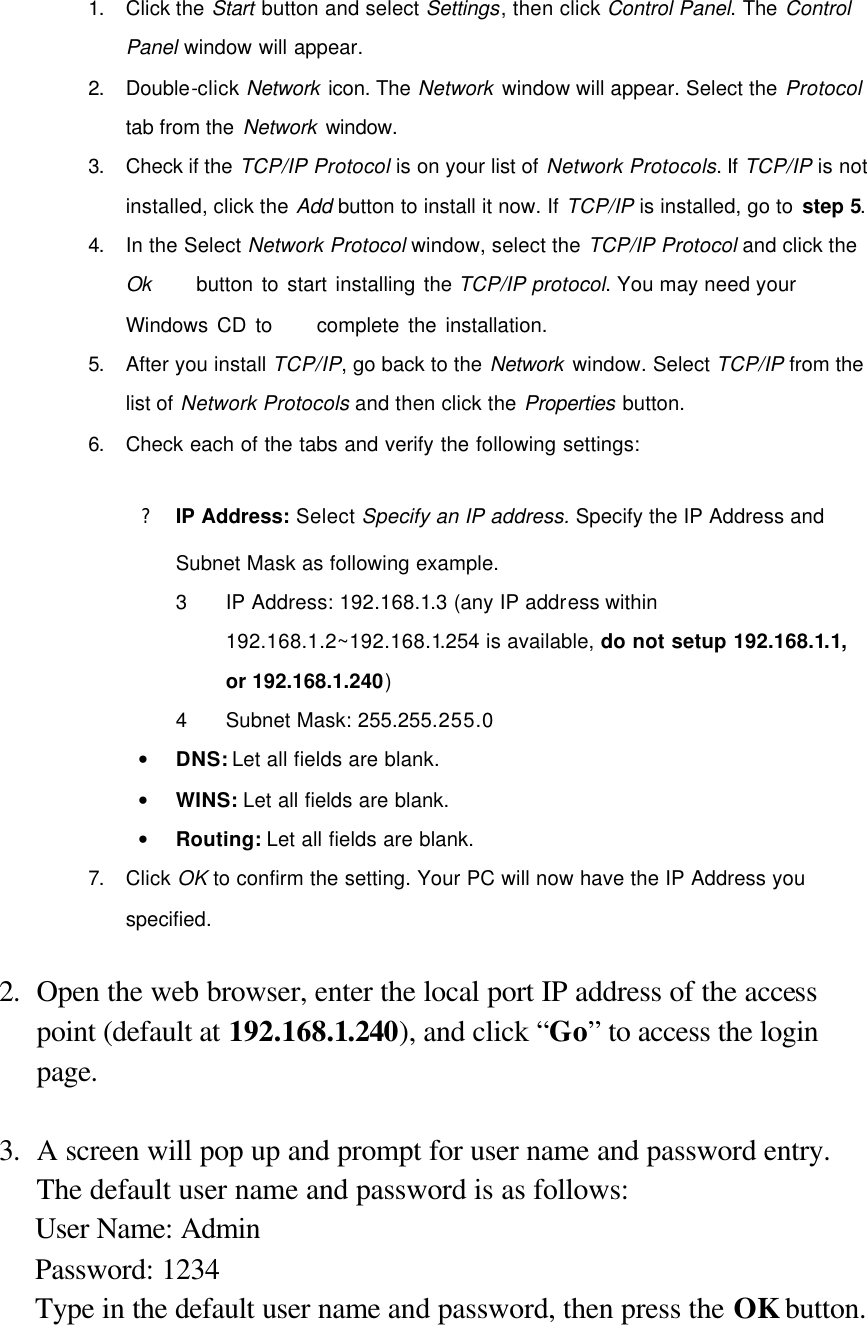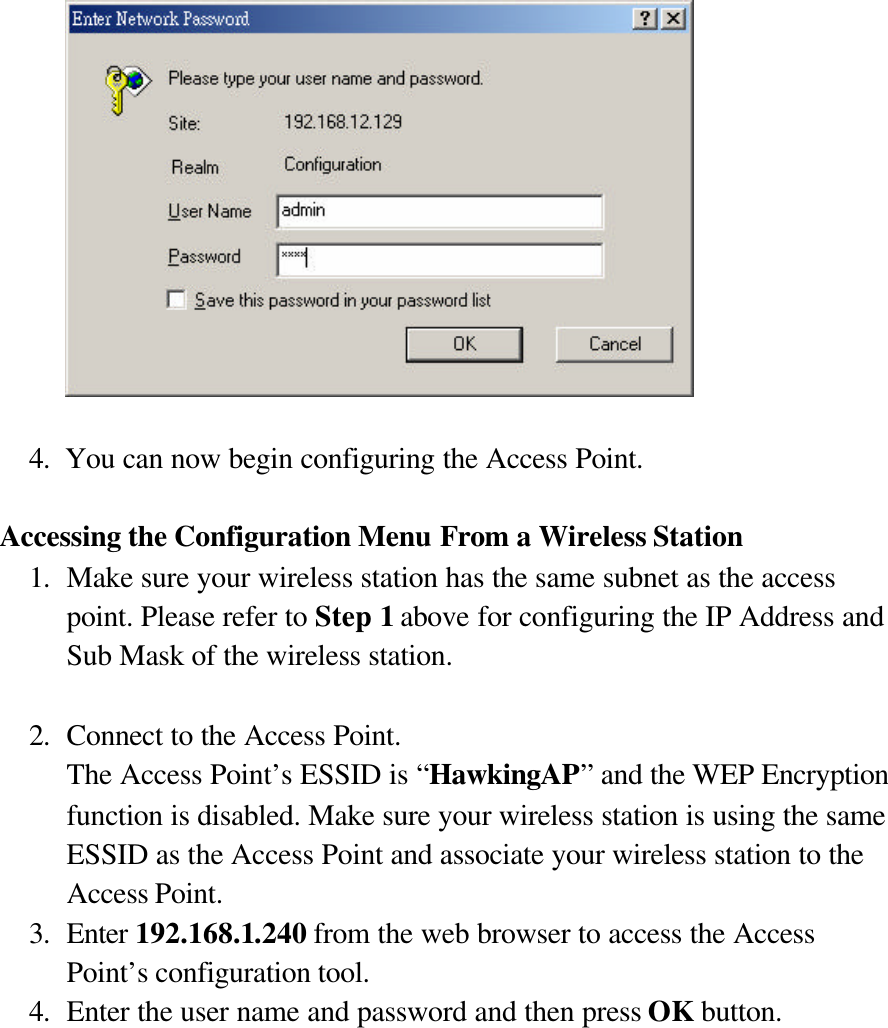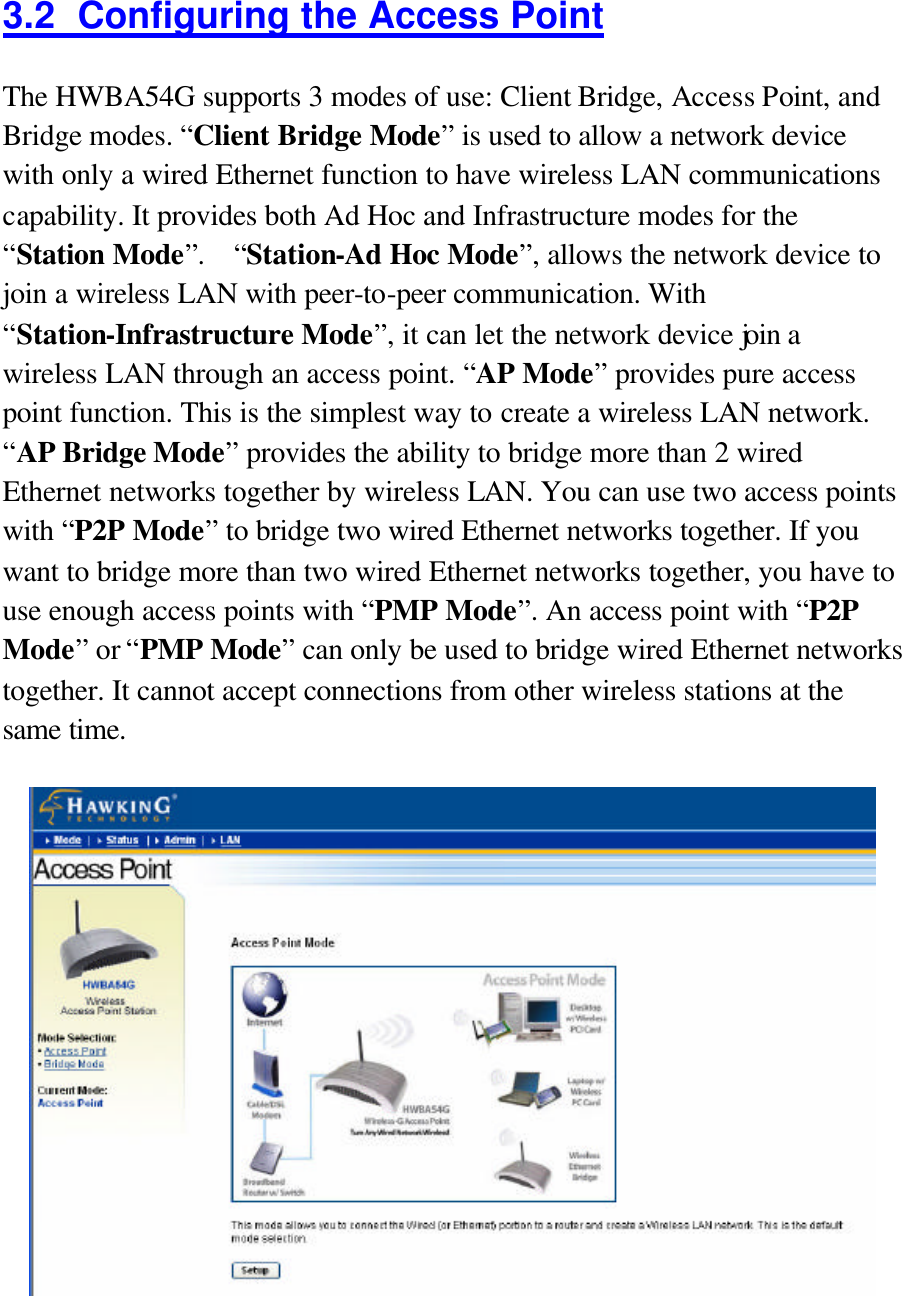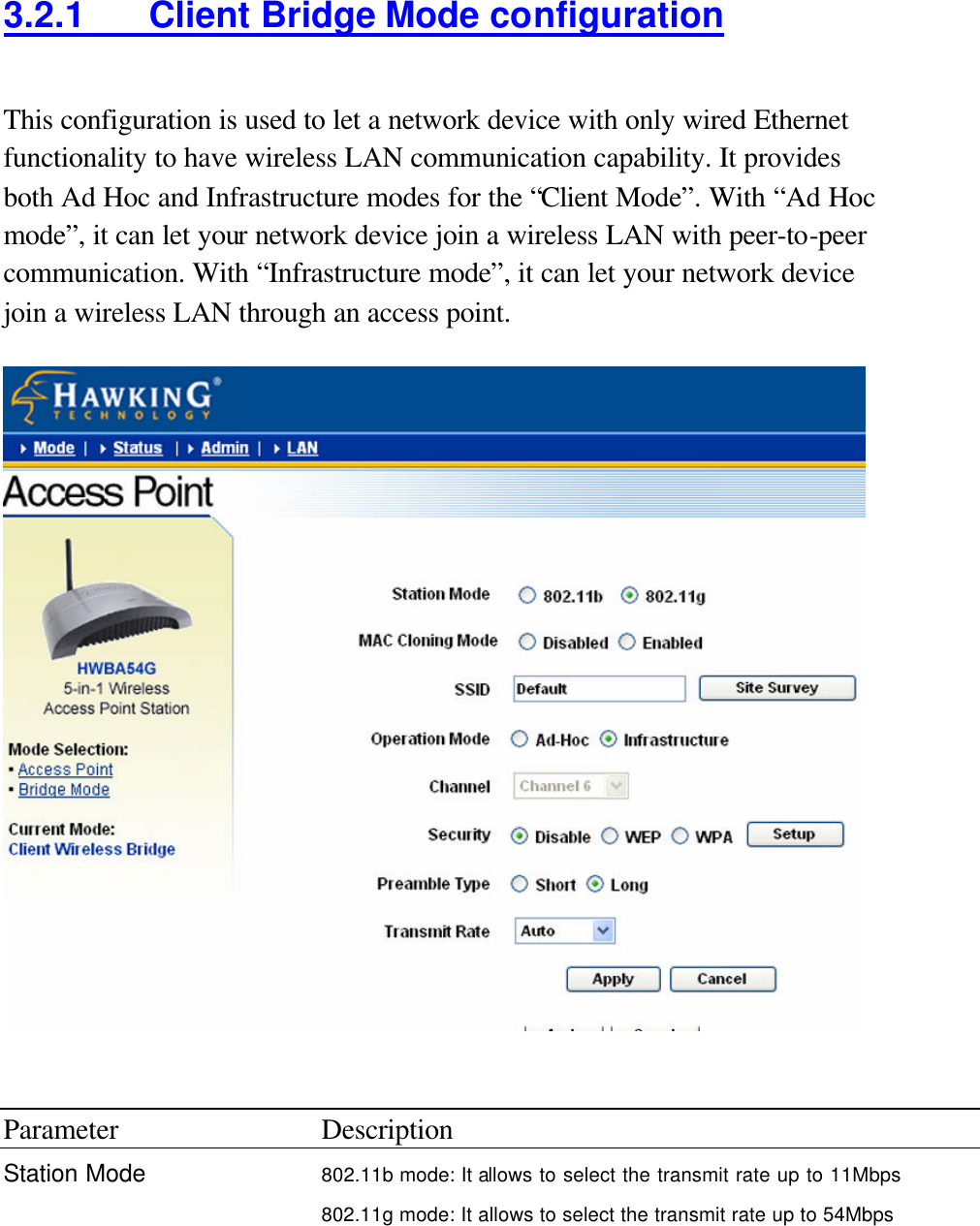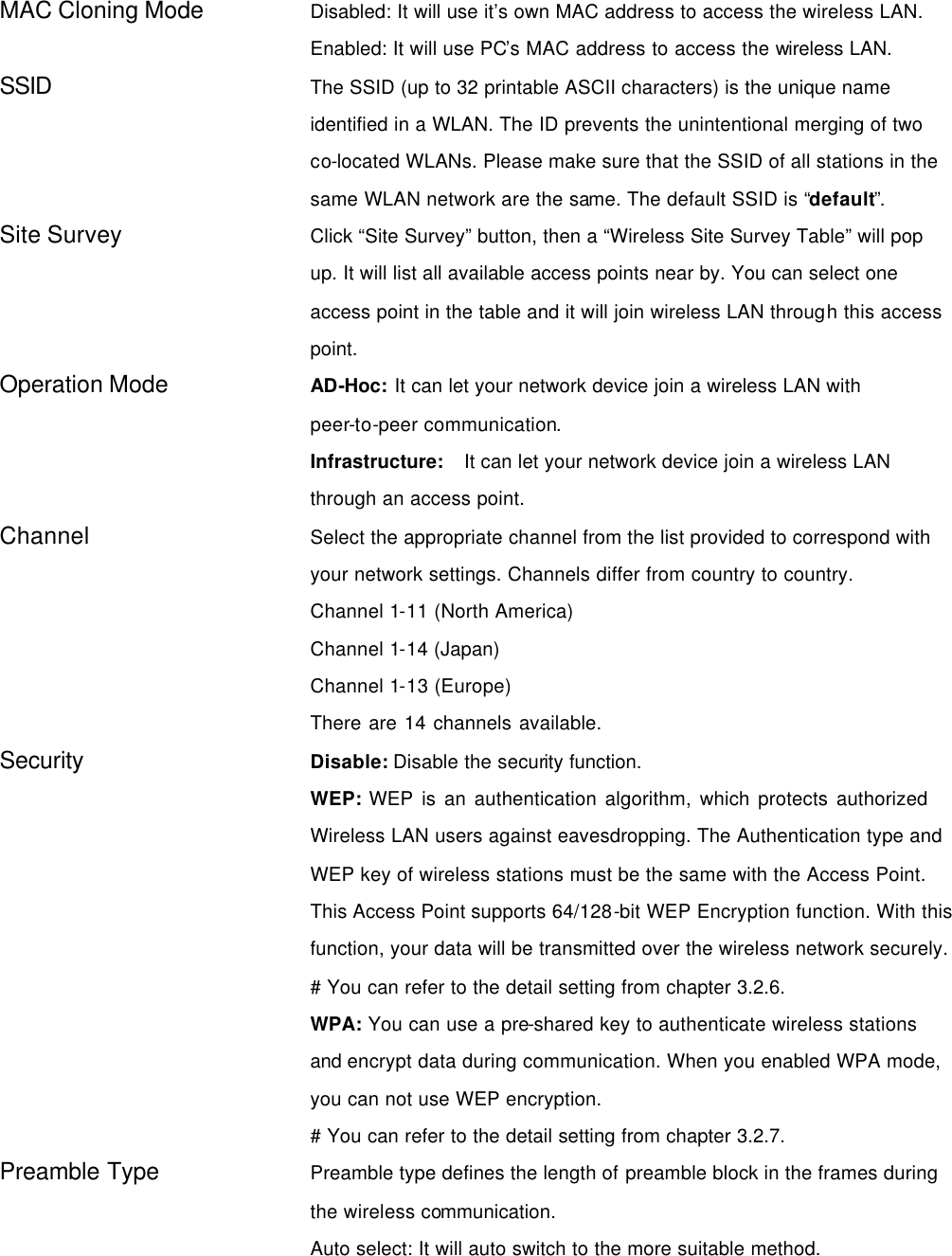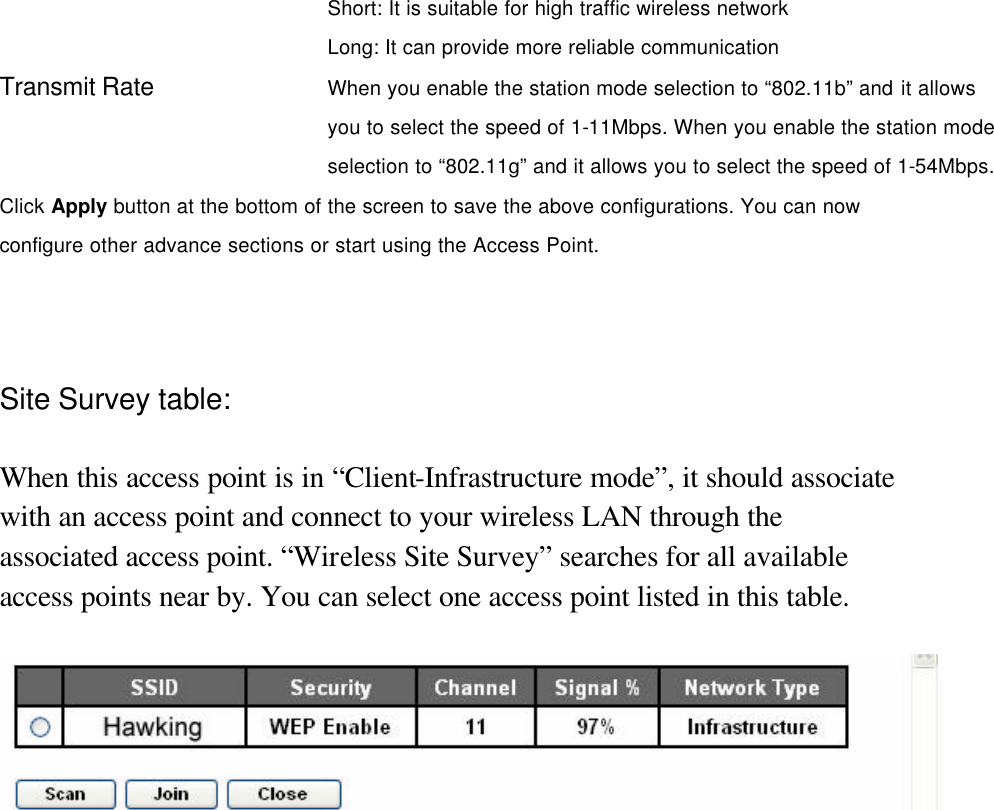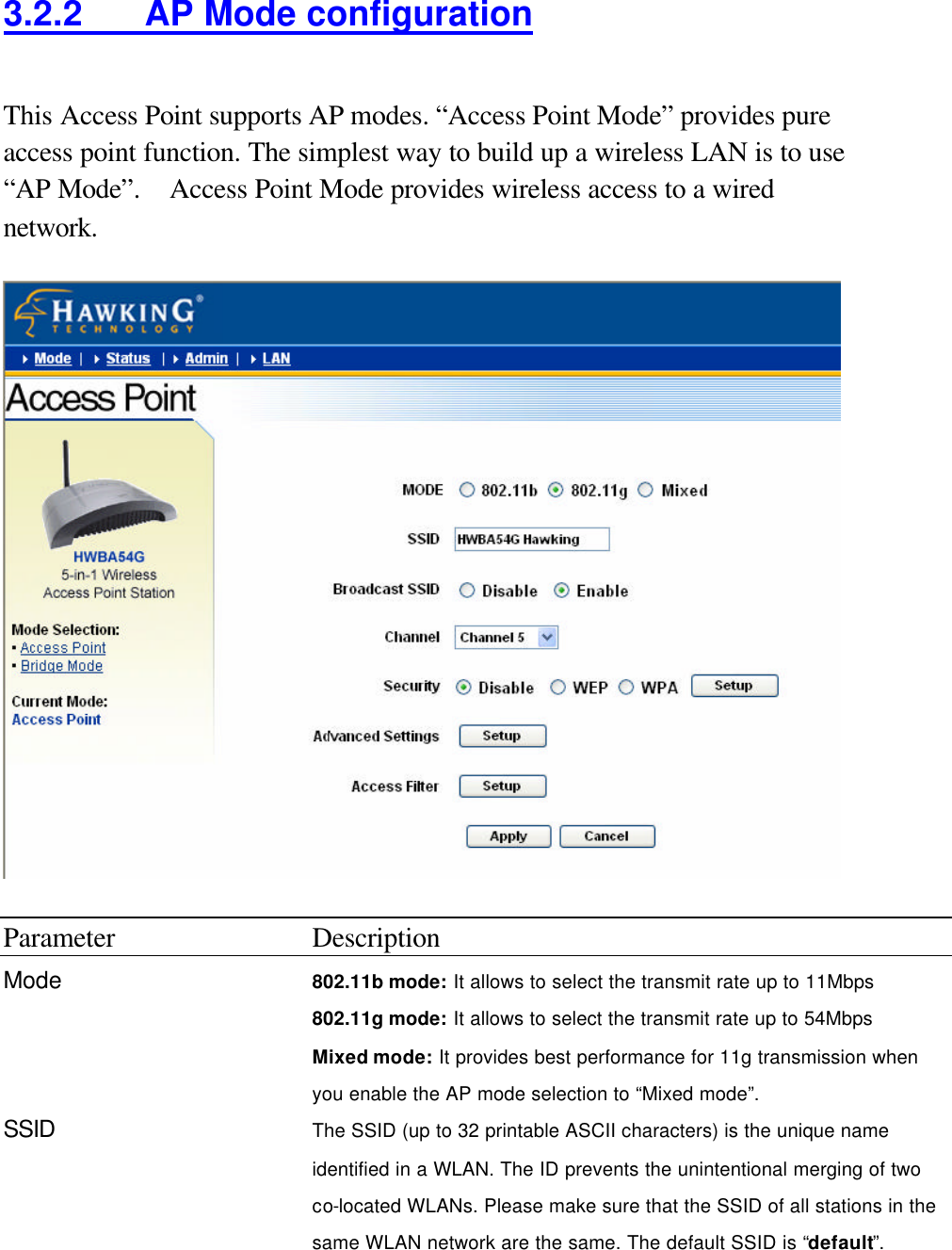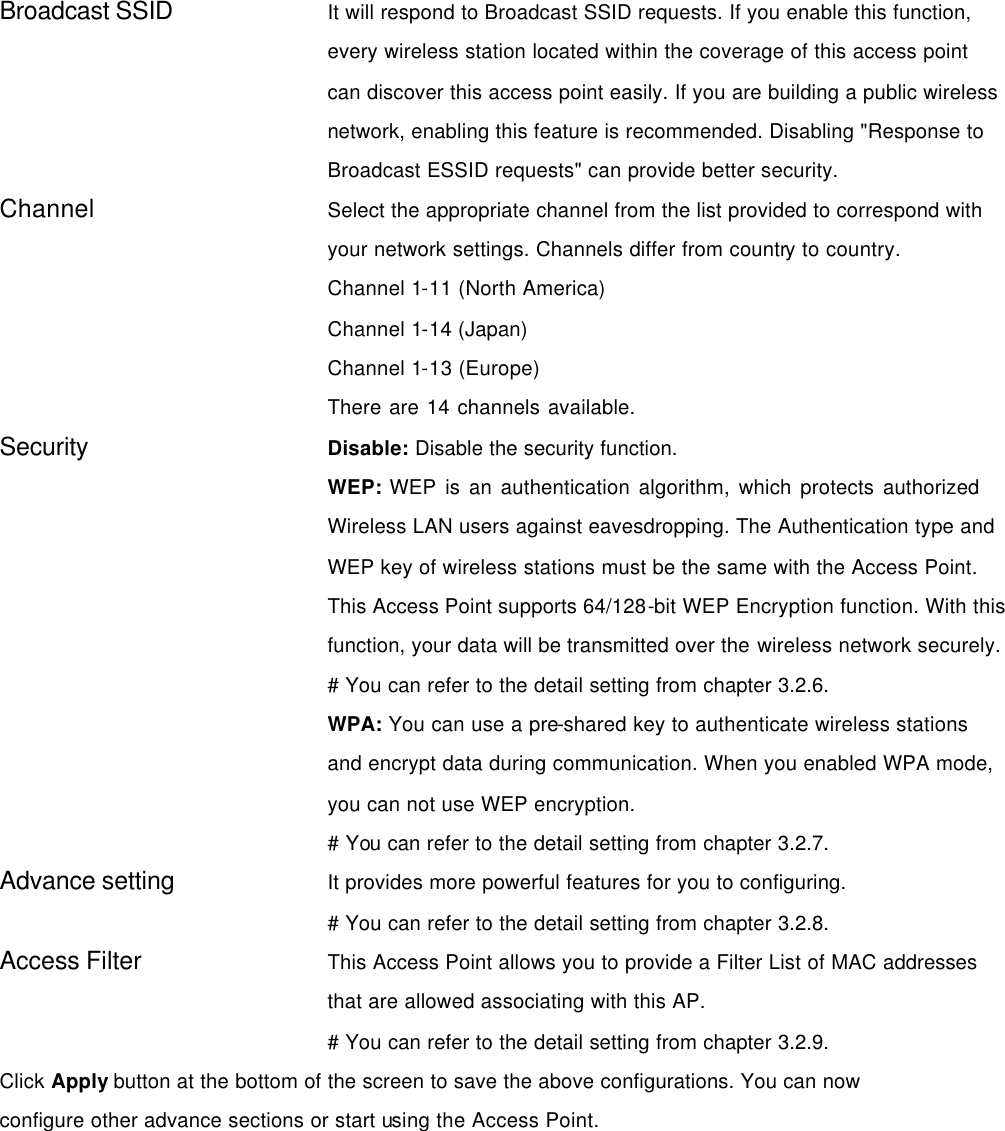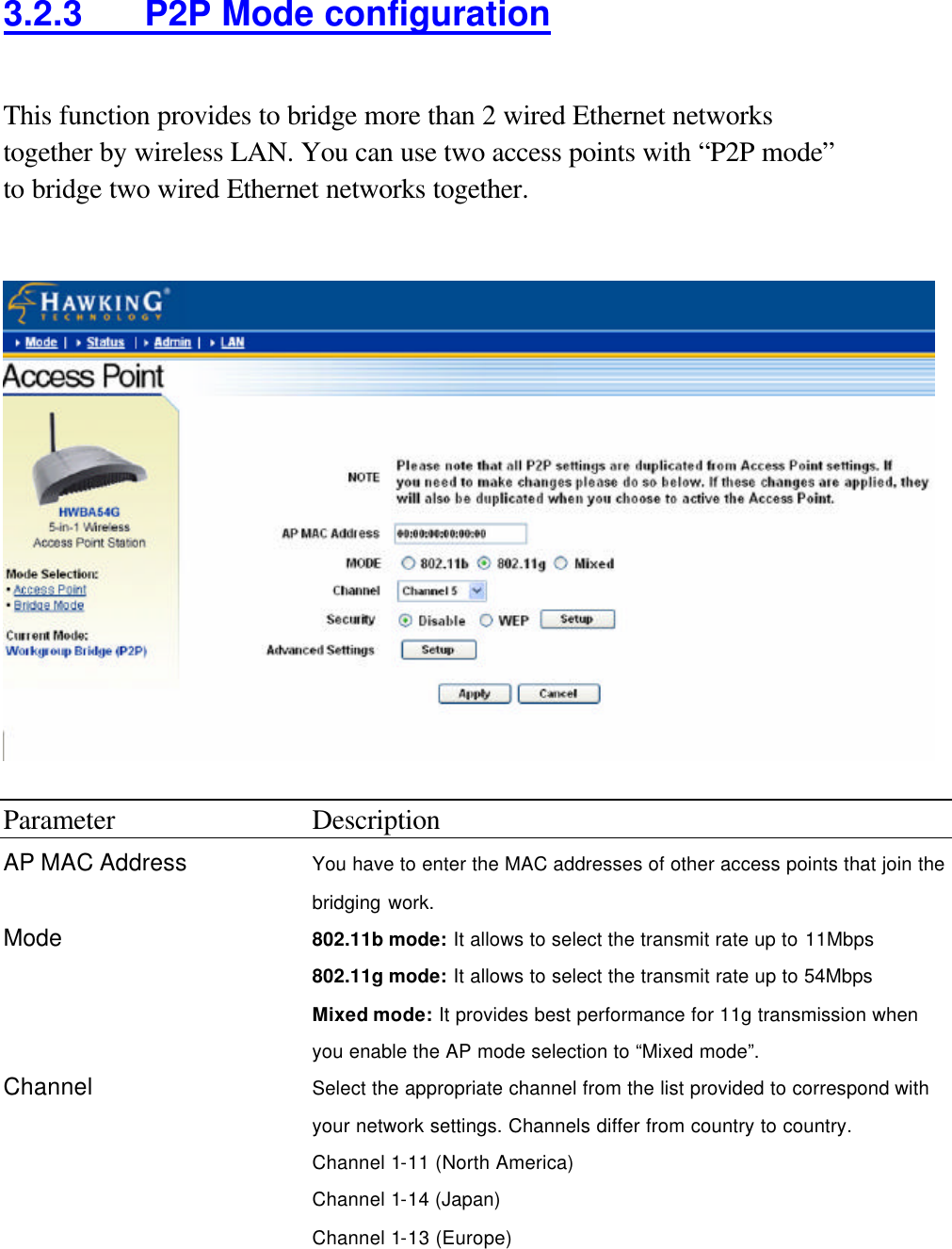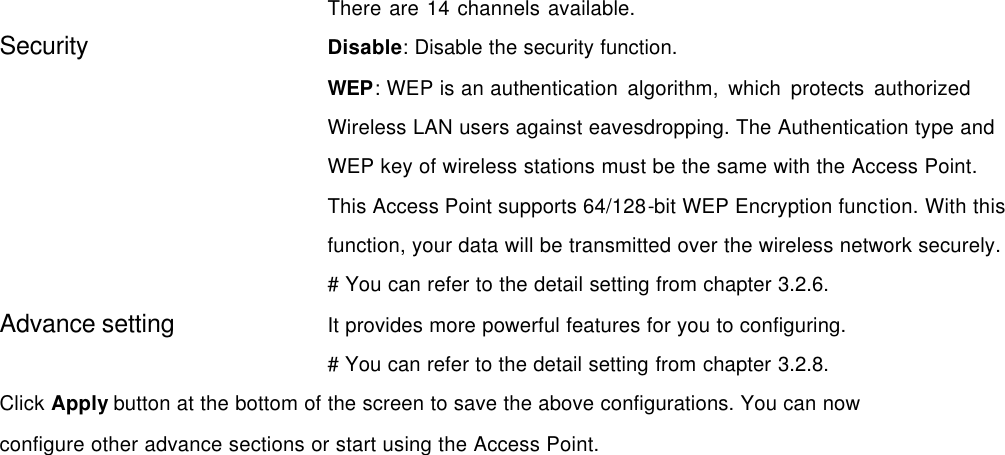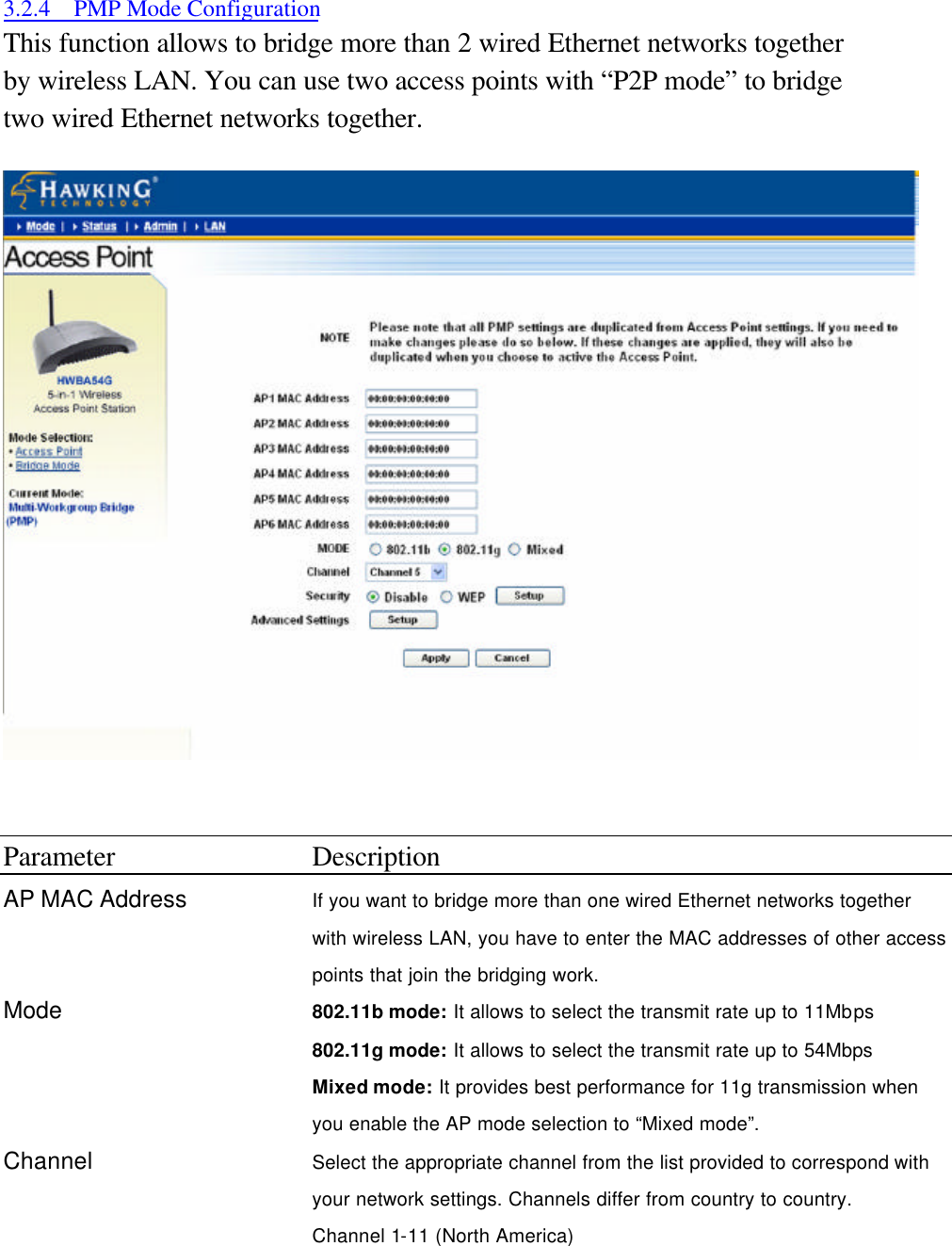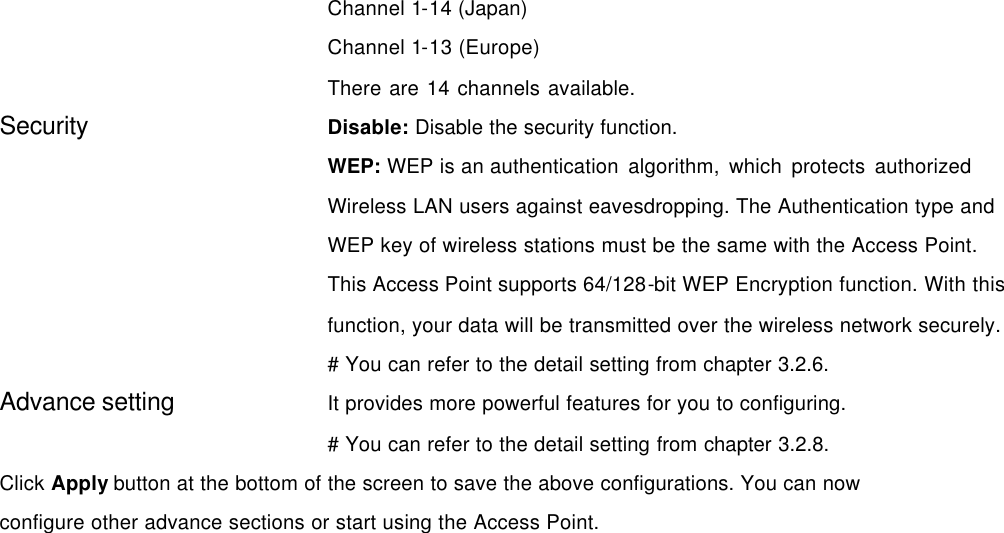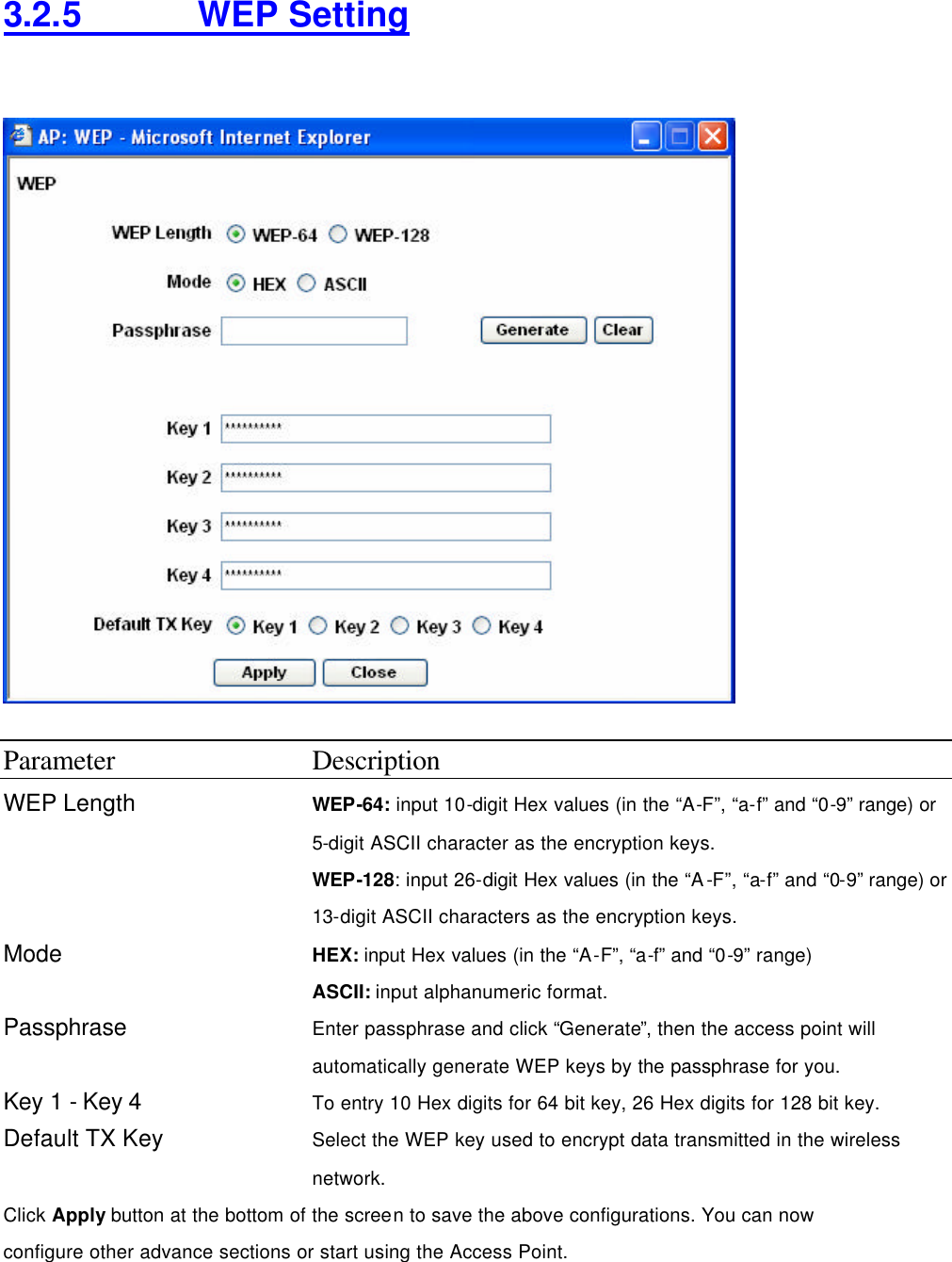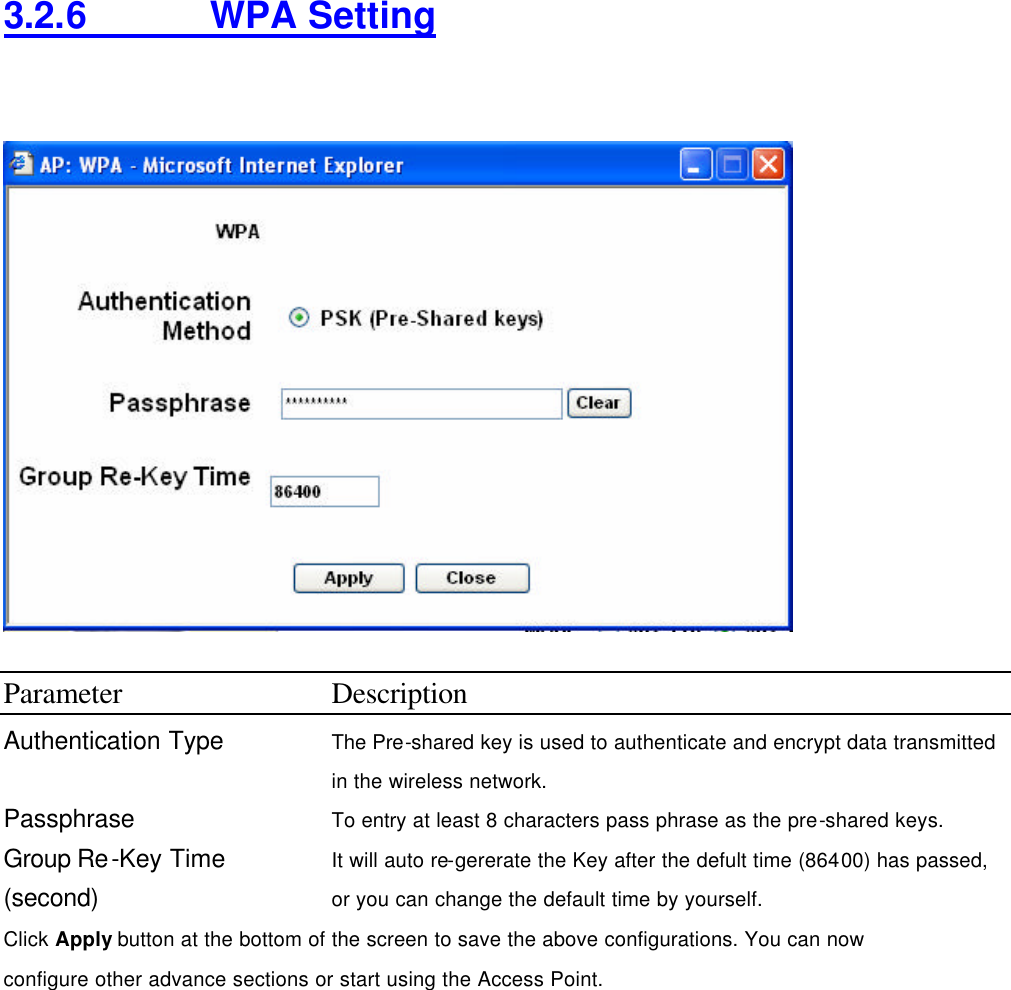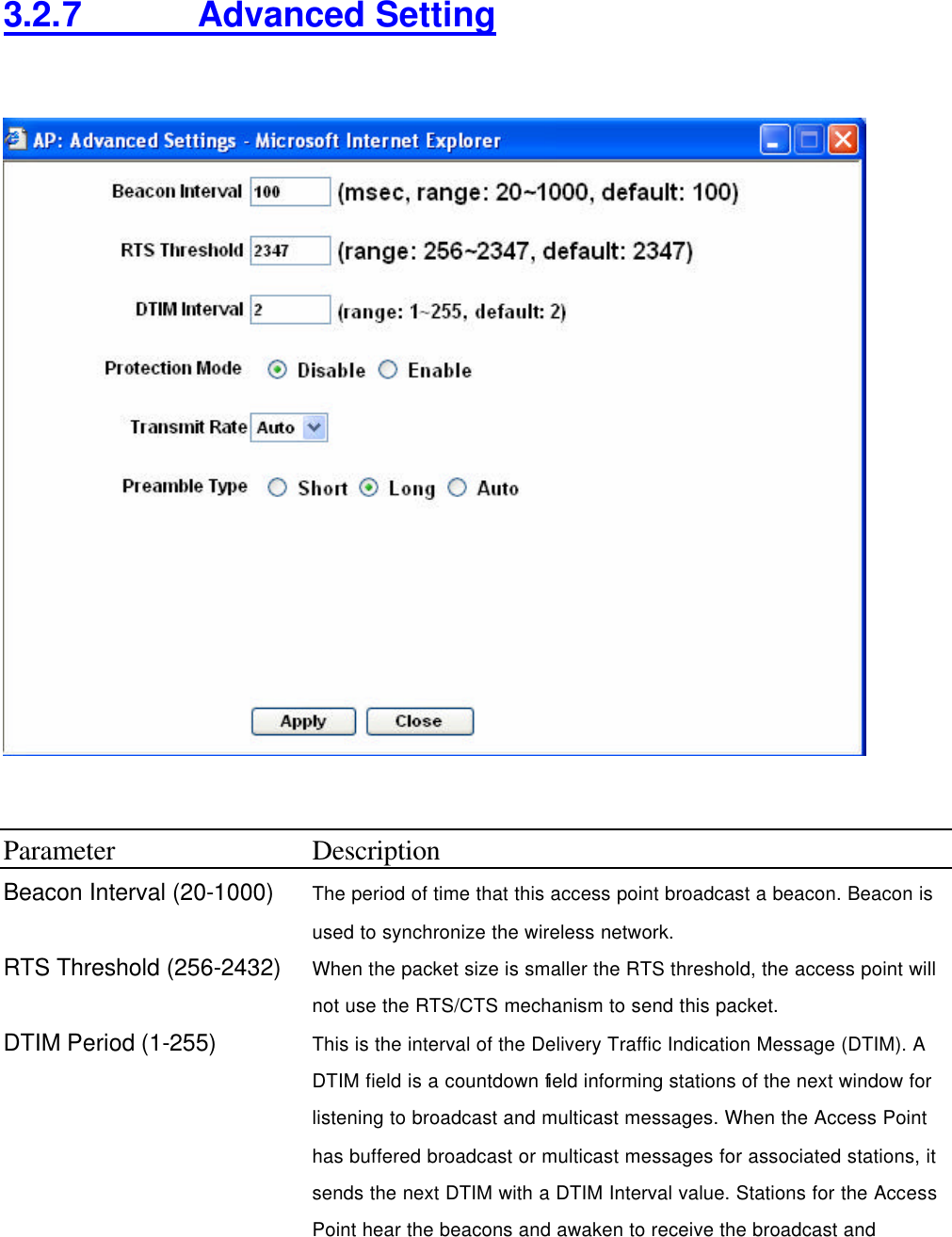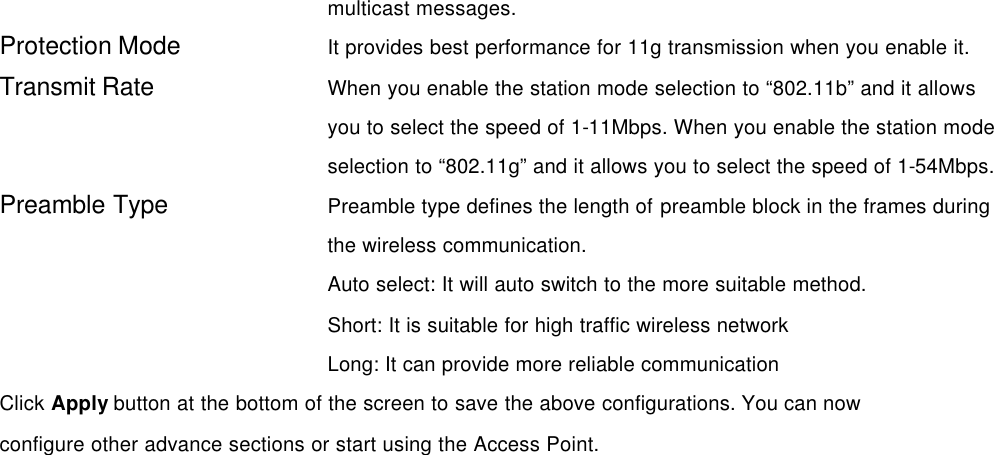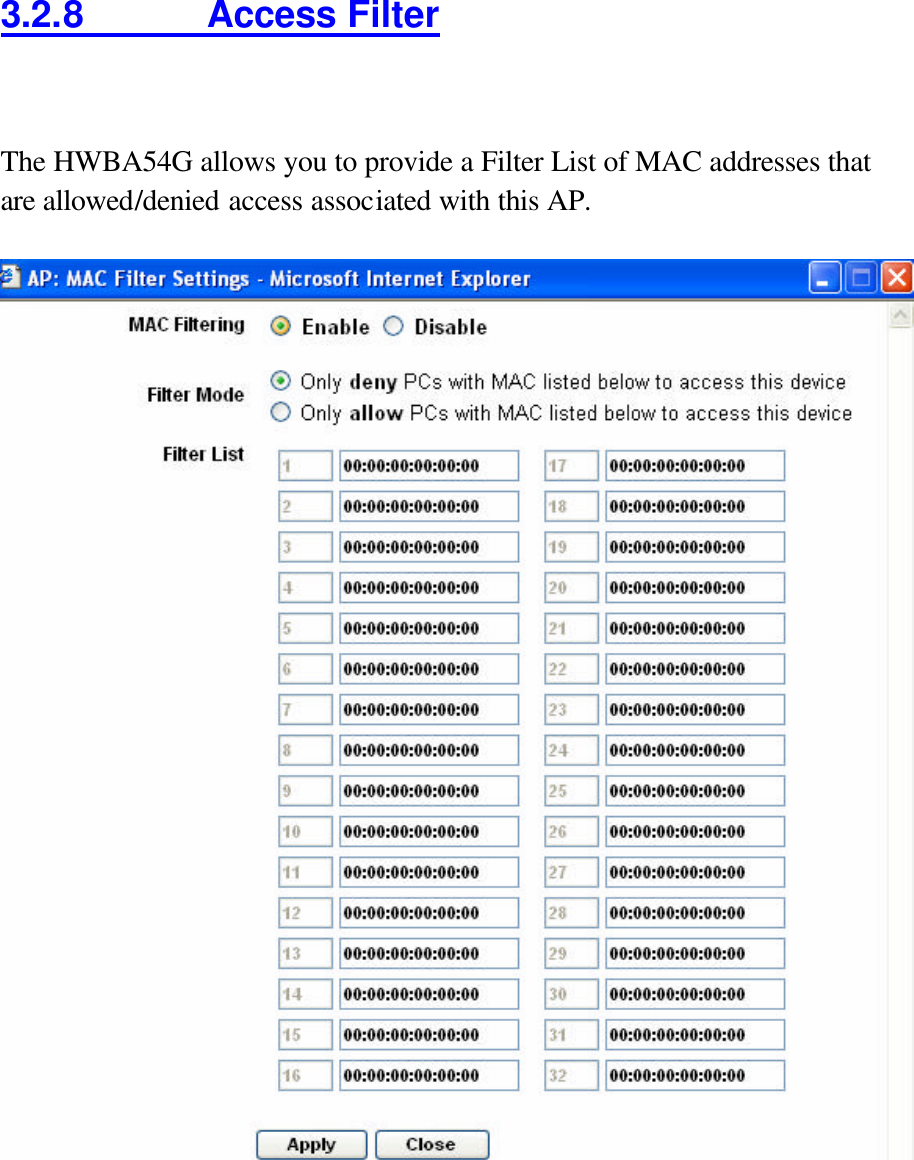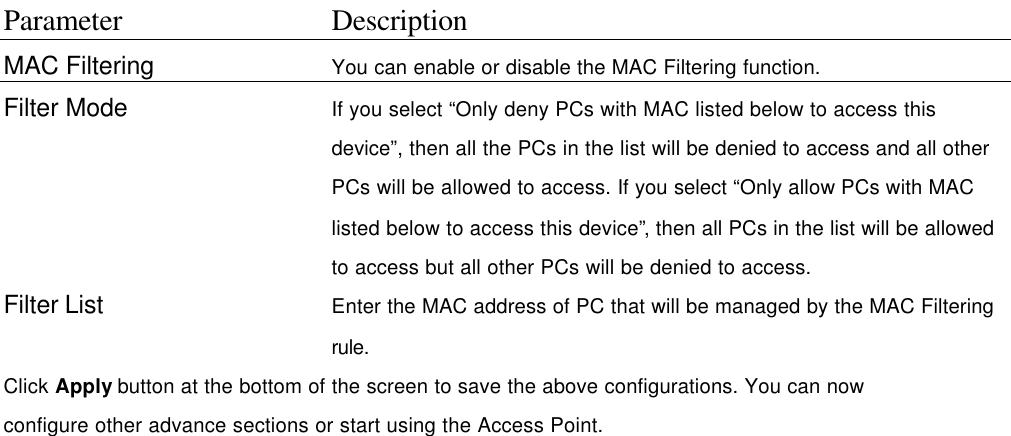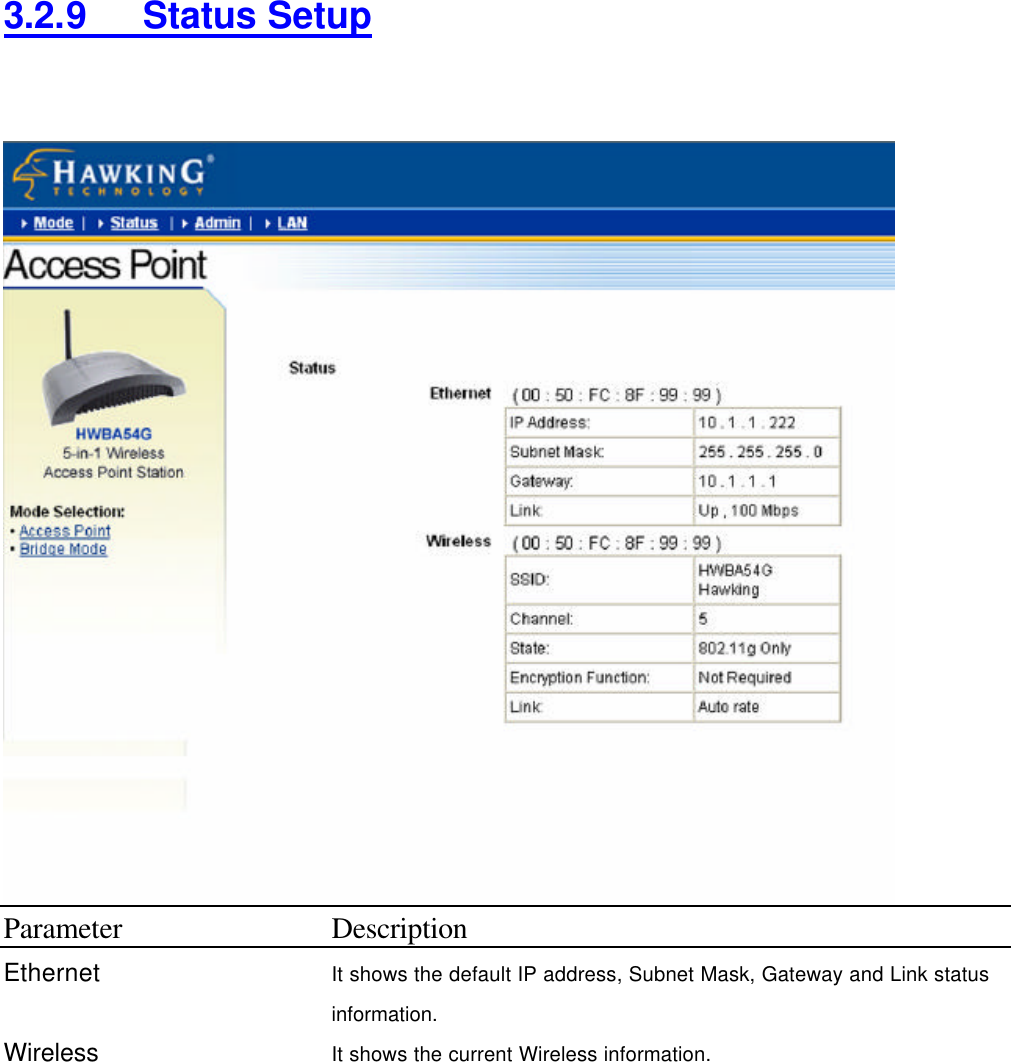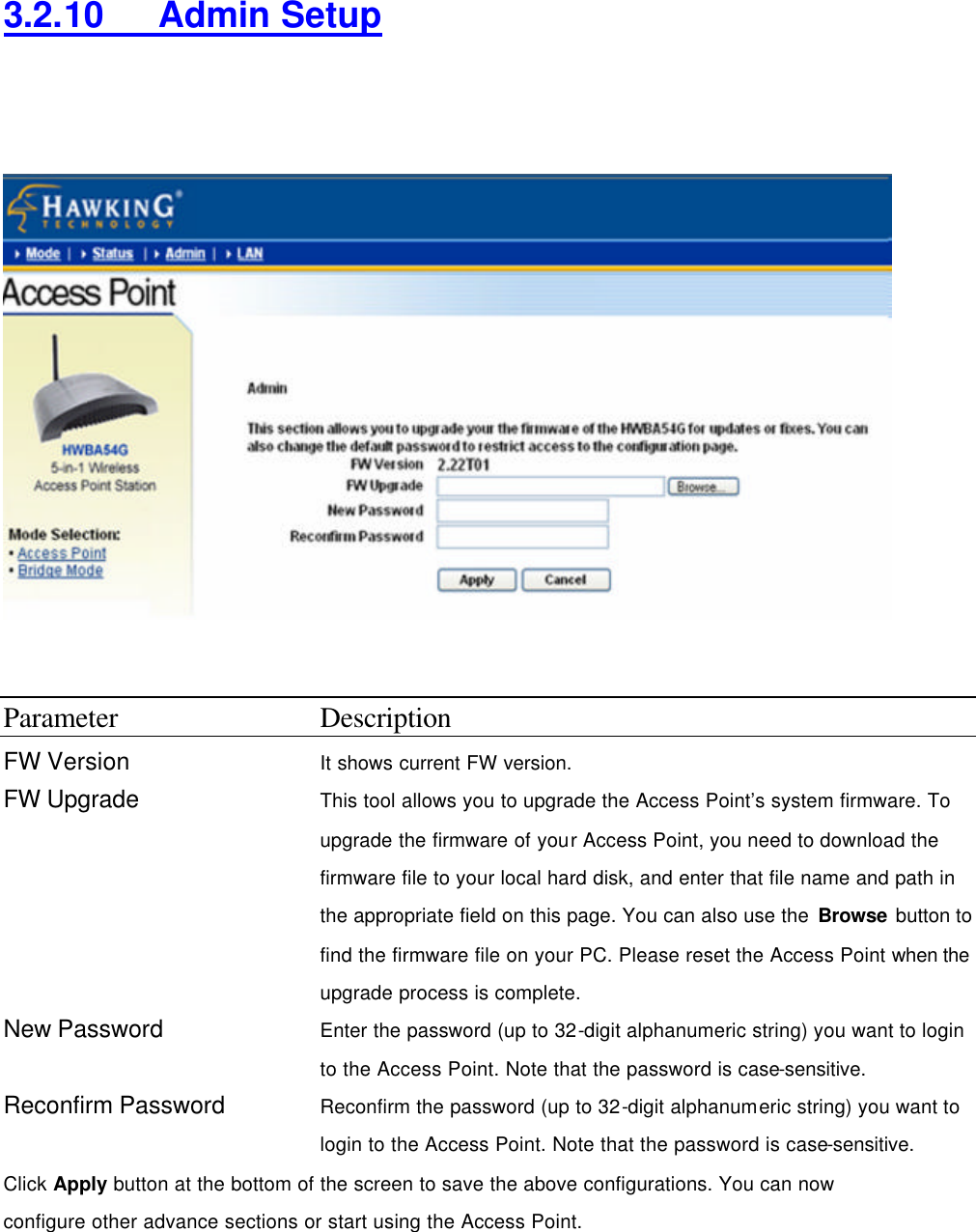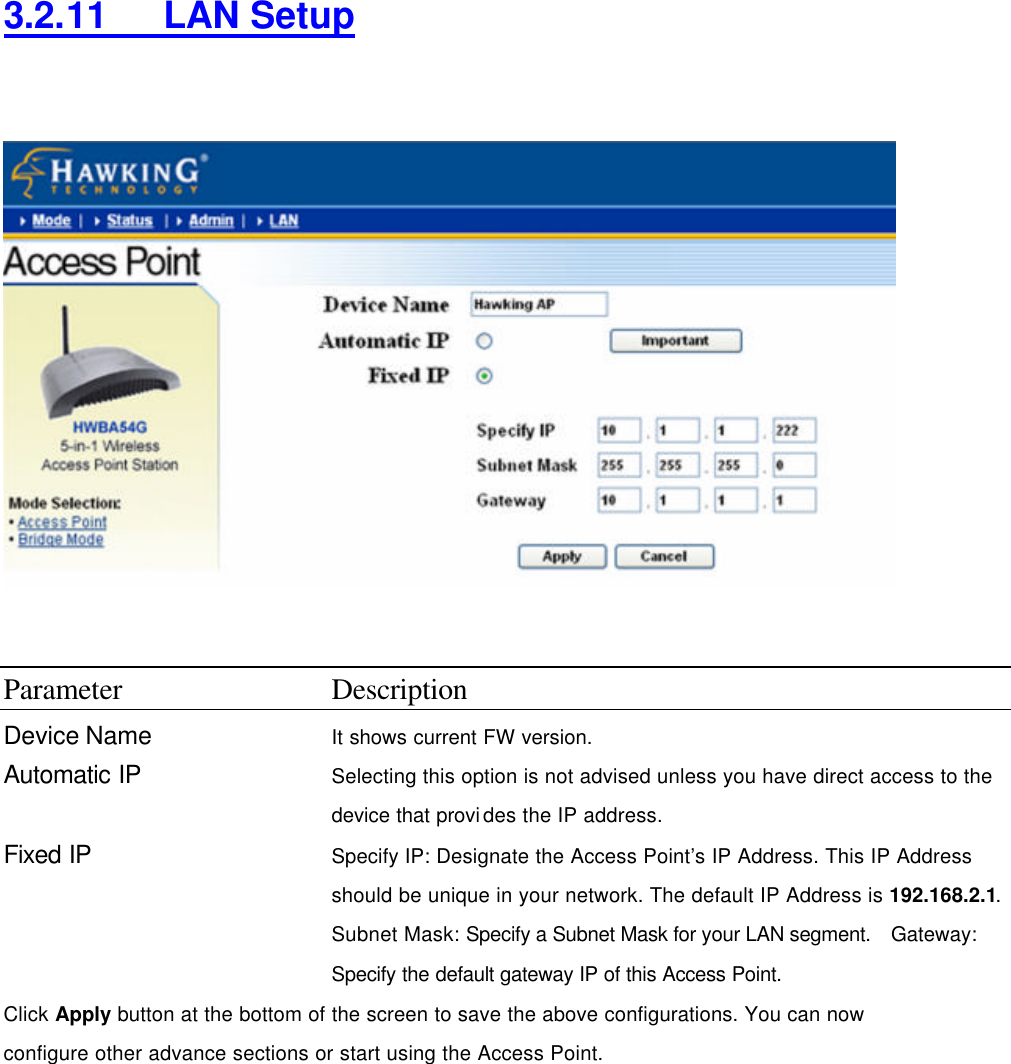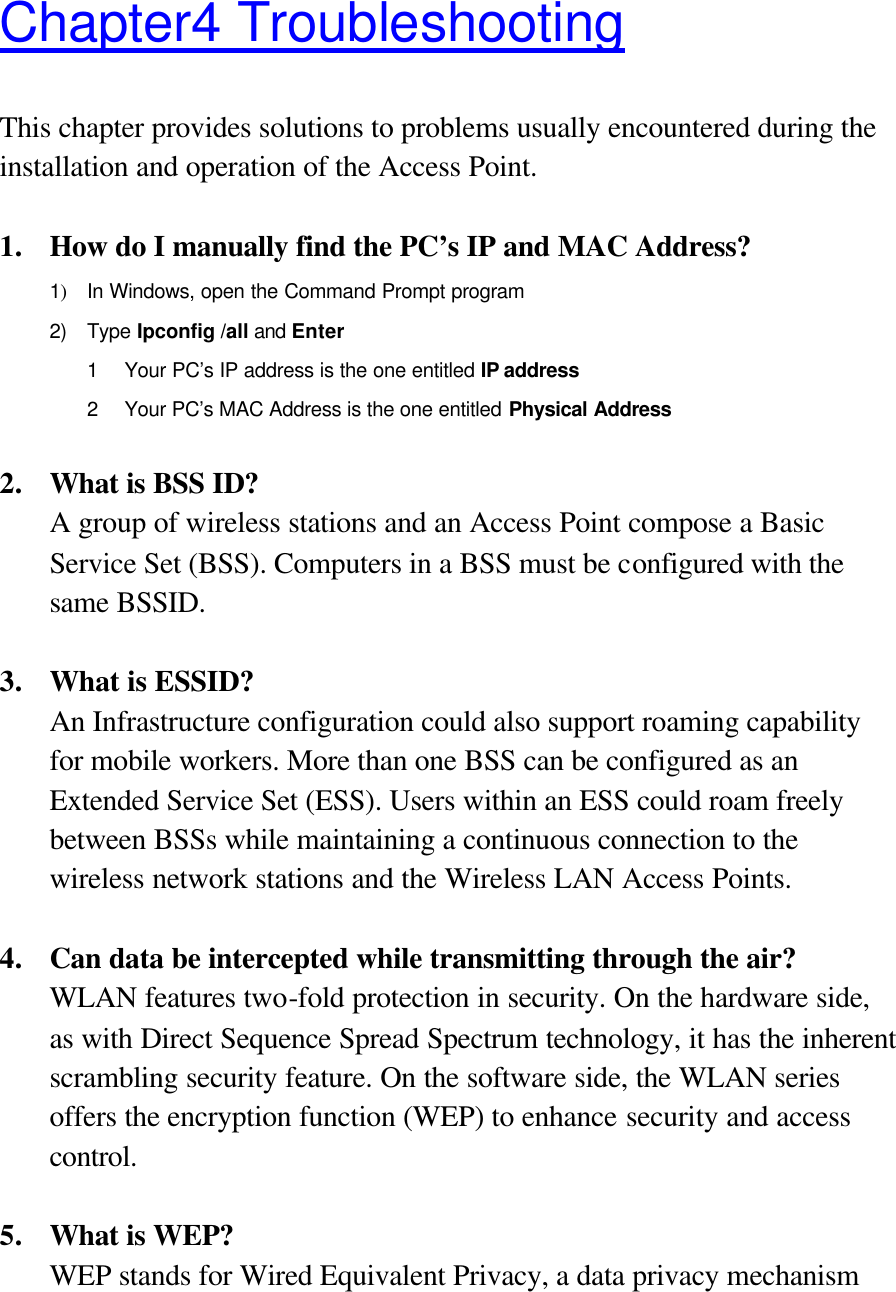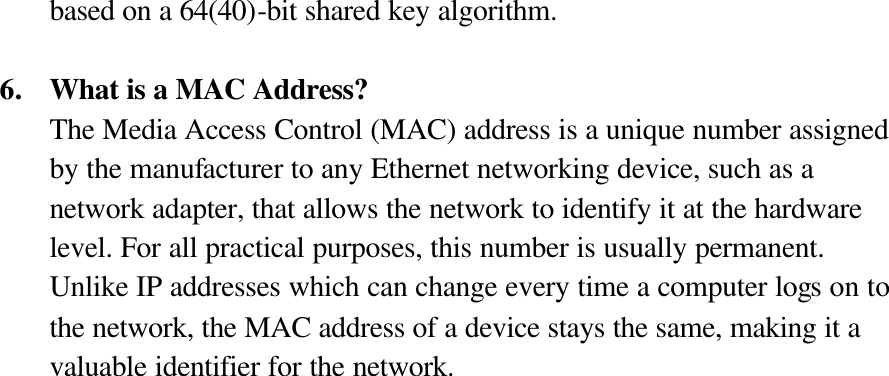Hawking Technologies HSB1 802.11b/g Adjustable WiFi Signal Booster User Manual HWBA54G Manual Final
Hawking Technologies, Inc. 802.11b/g Adjustable WiFi Signal Booster HWBA54G Manual Final
Contents
- 1. Users Manual
- 2. CRN 25109 Q2 user manual for booster
- 3. CRN 25109 user manual for access point
CRN 25109 user manual for access point
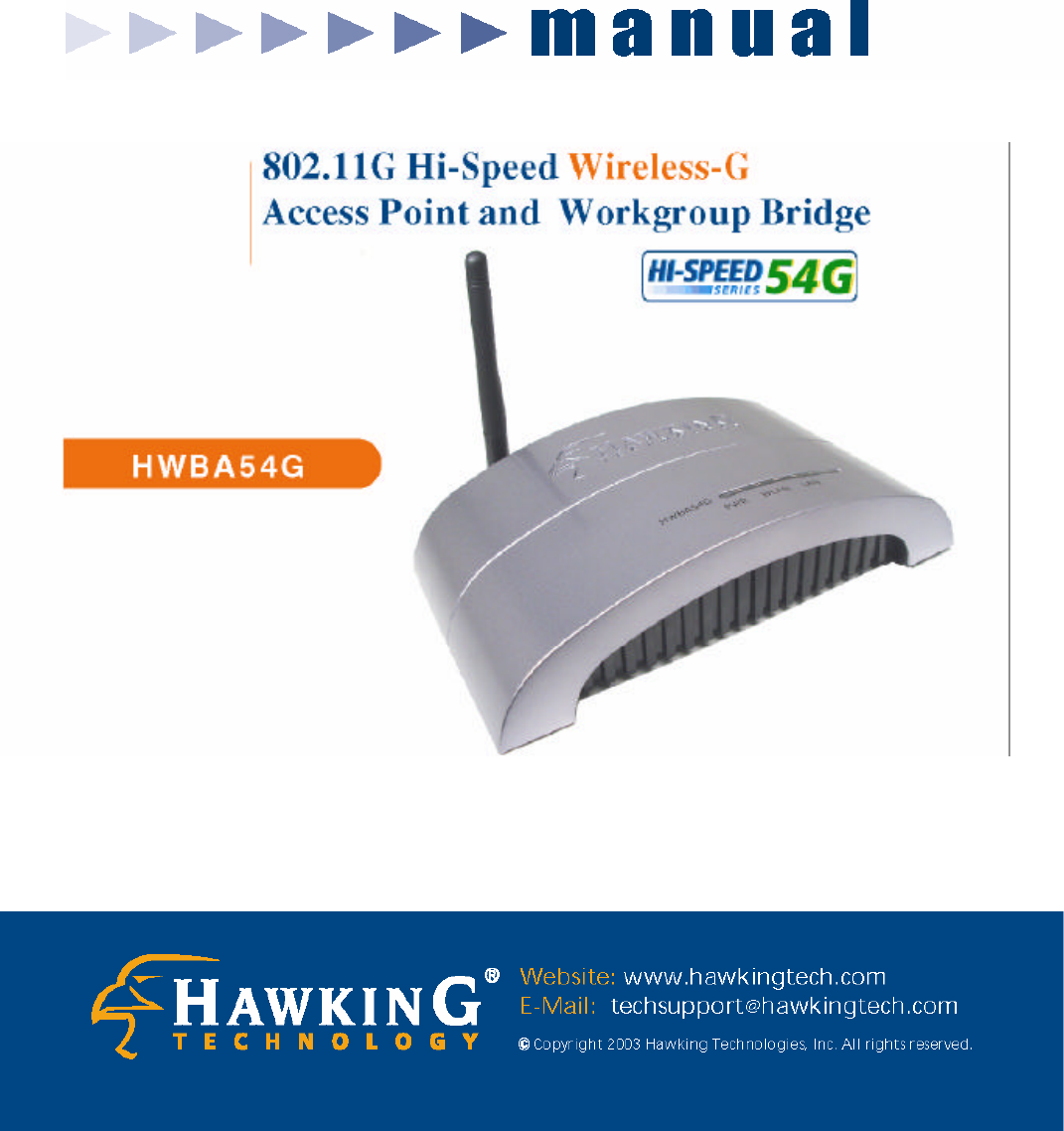
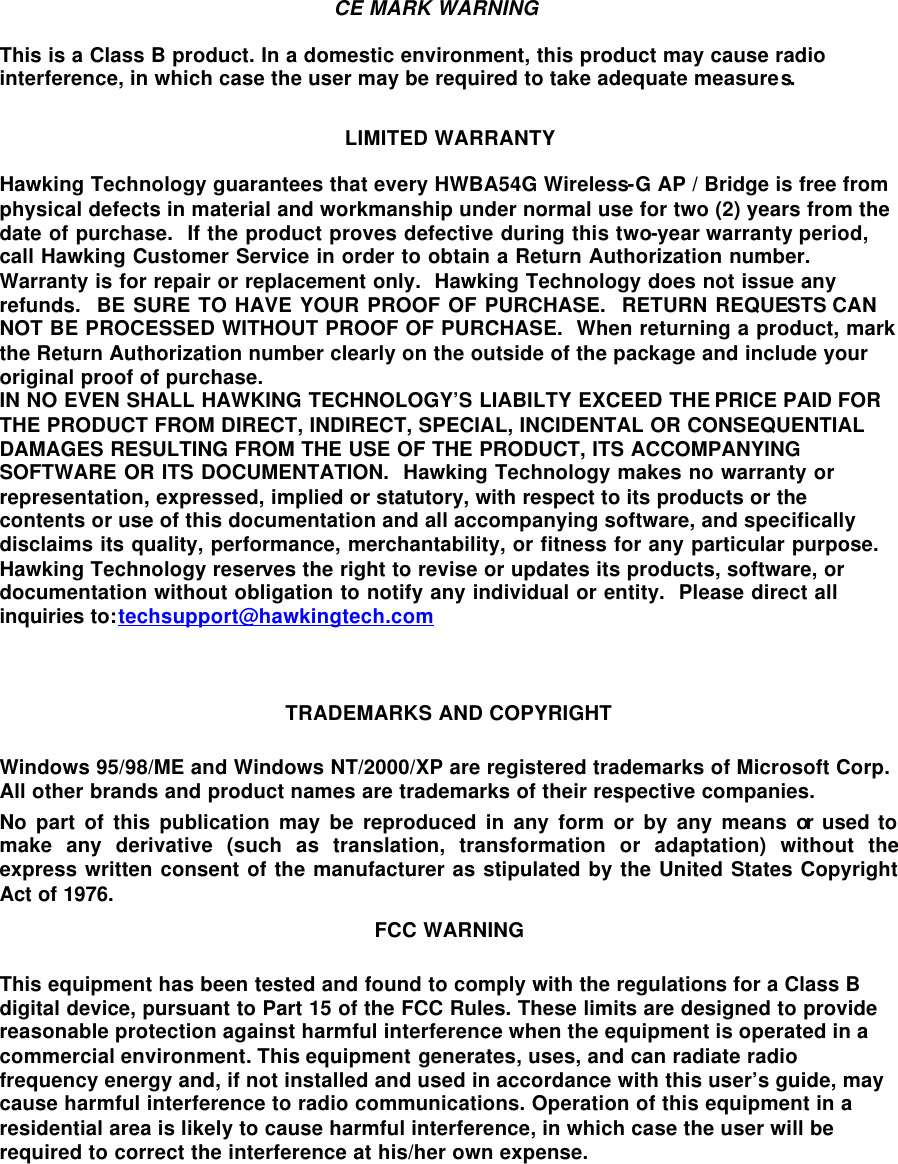
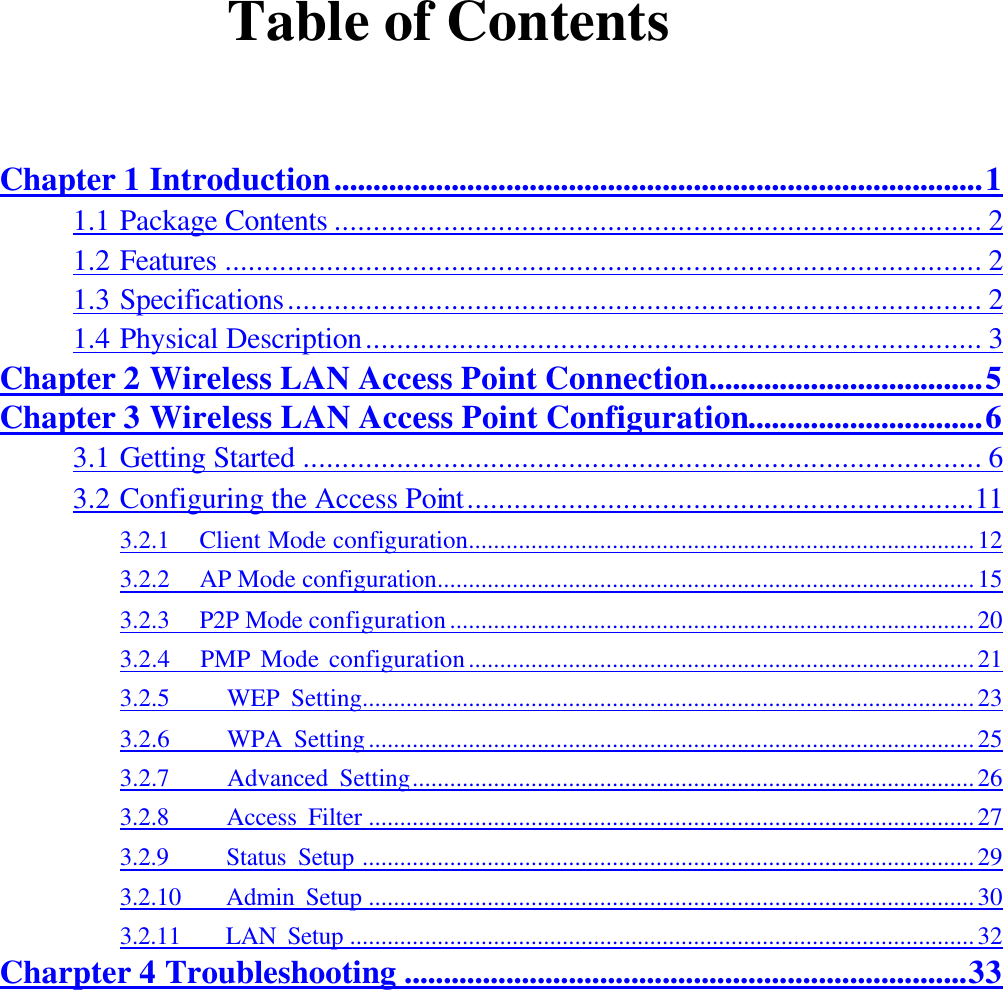
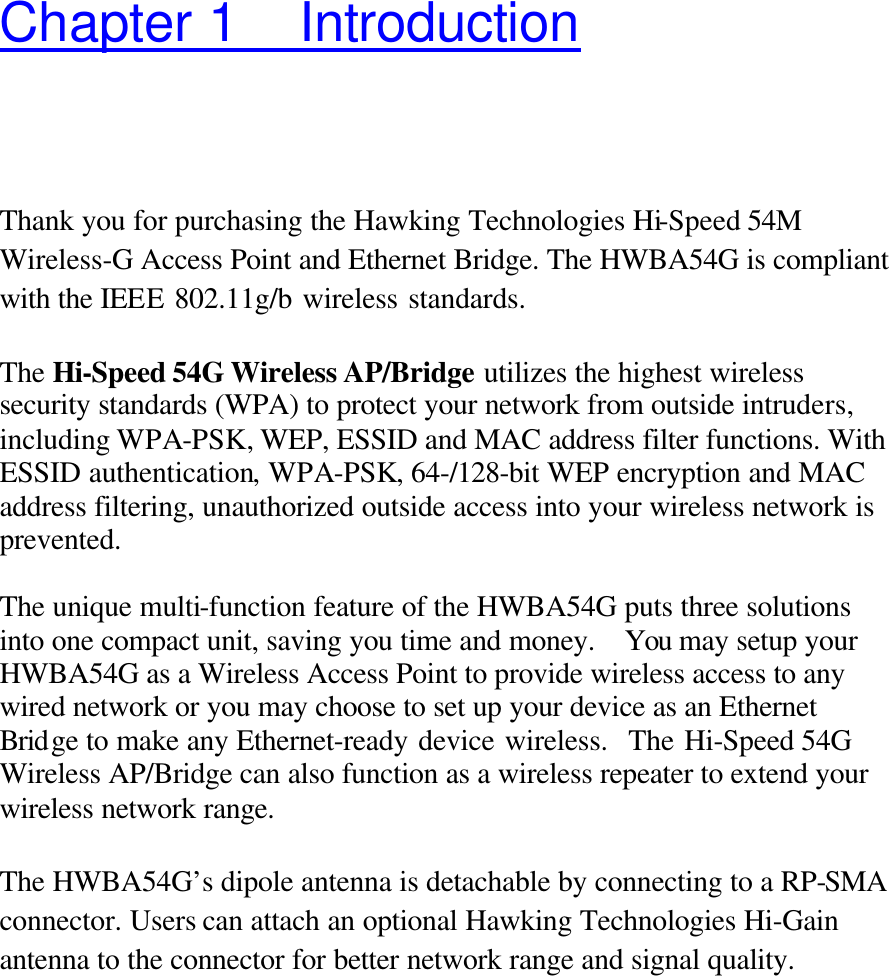
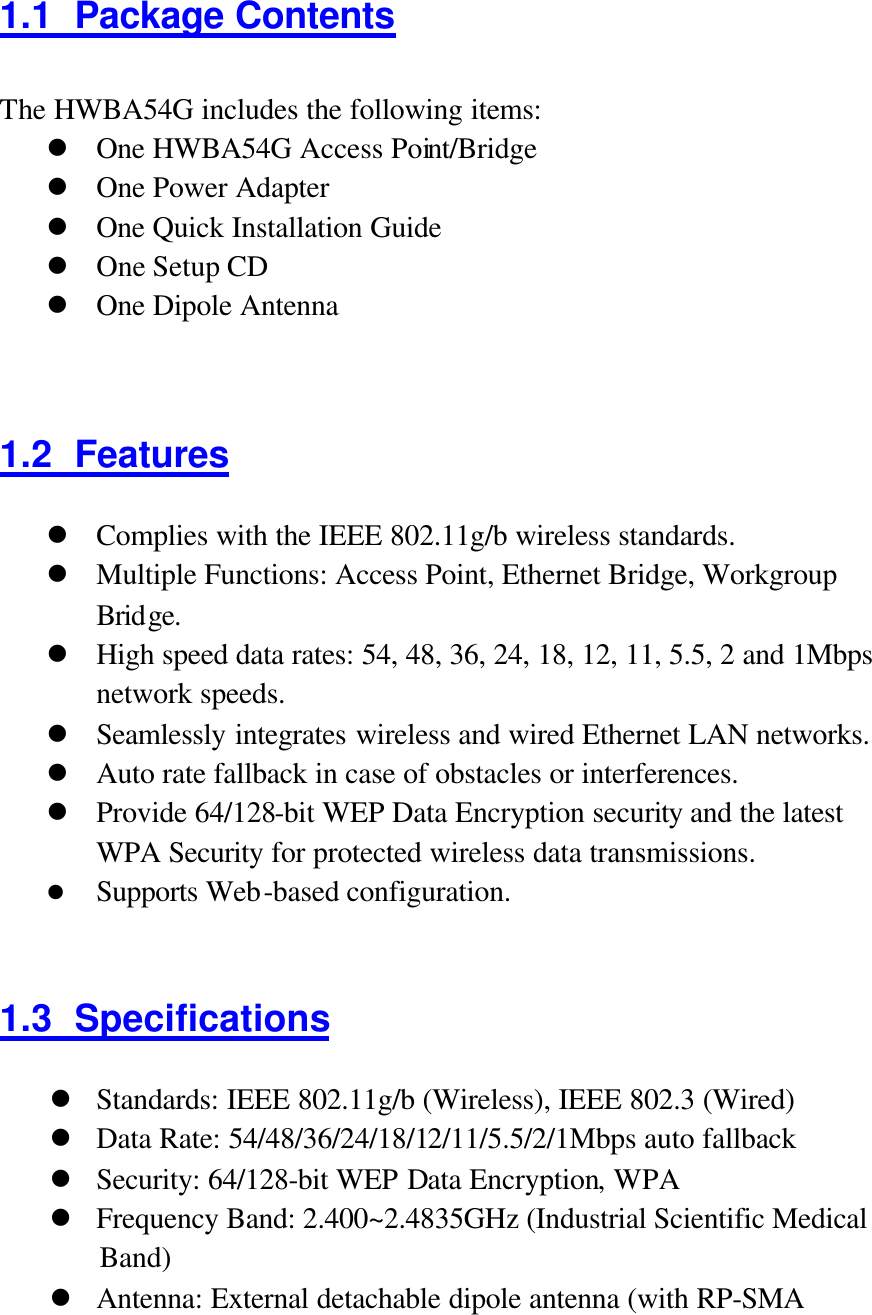
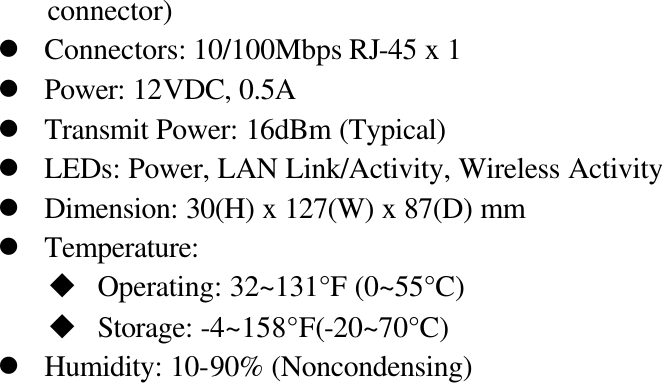
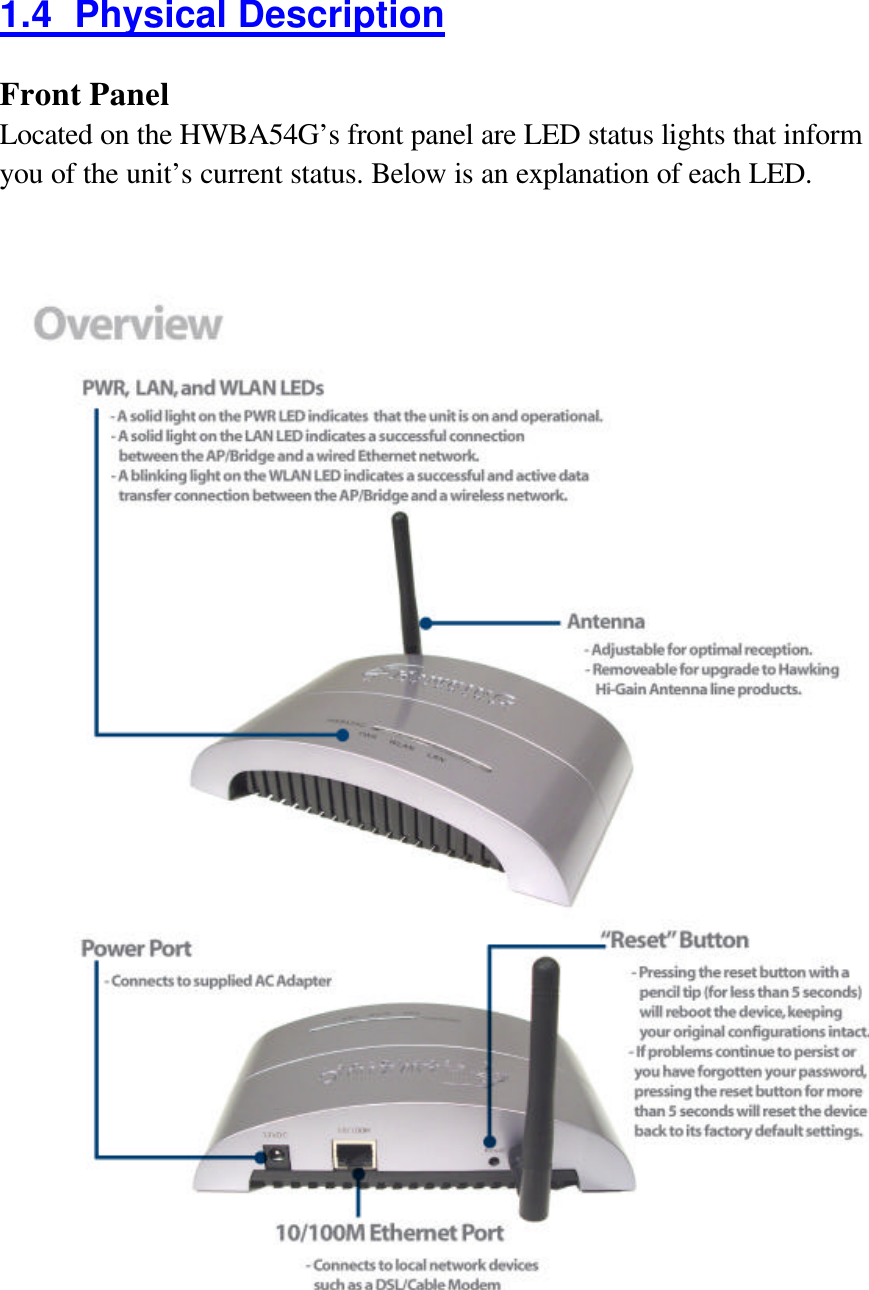
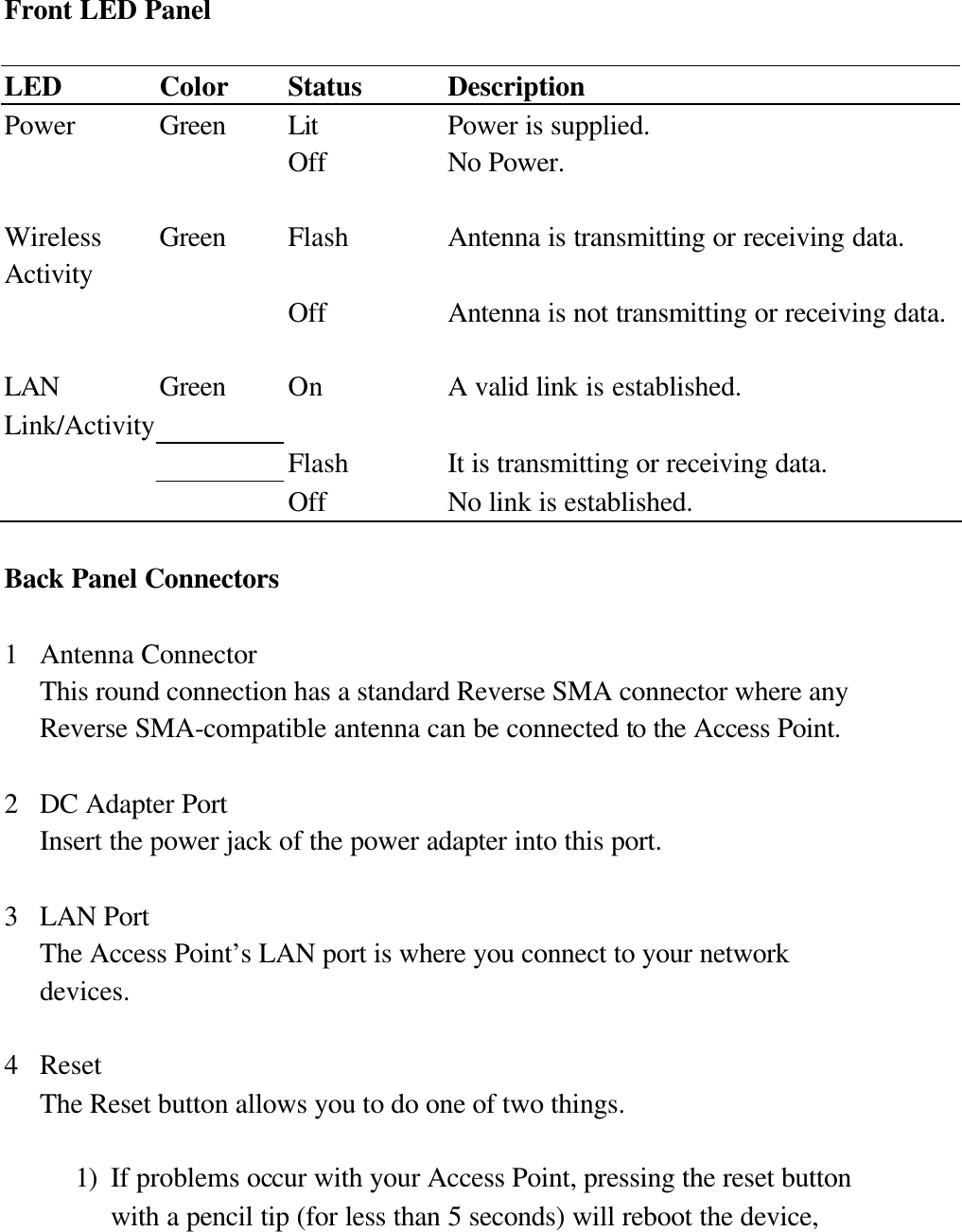

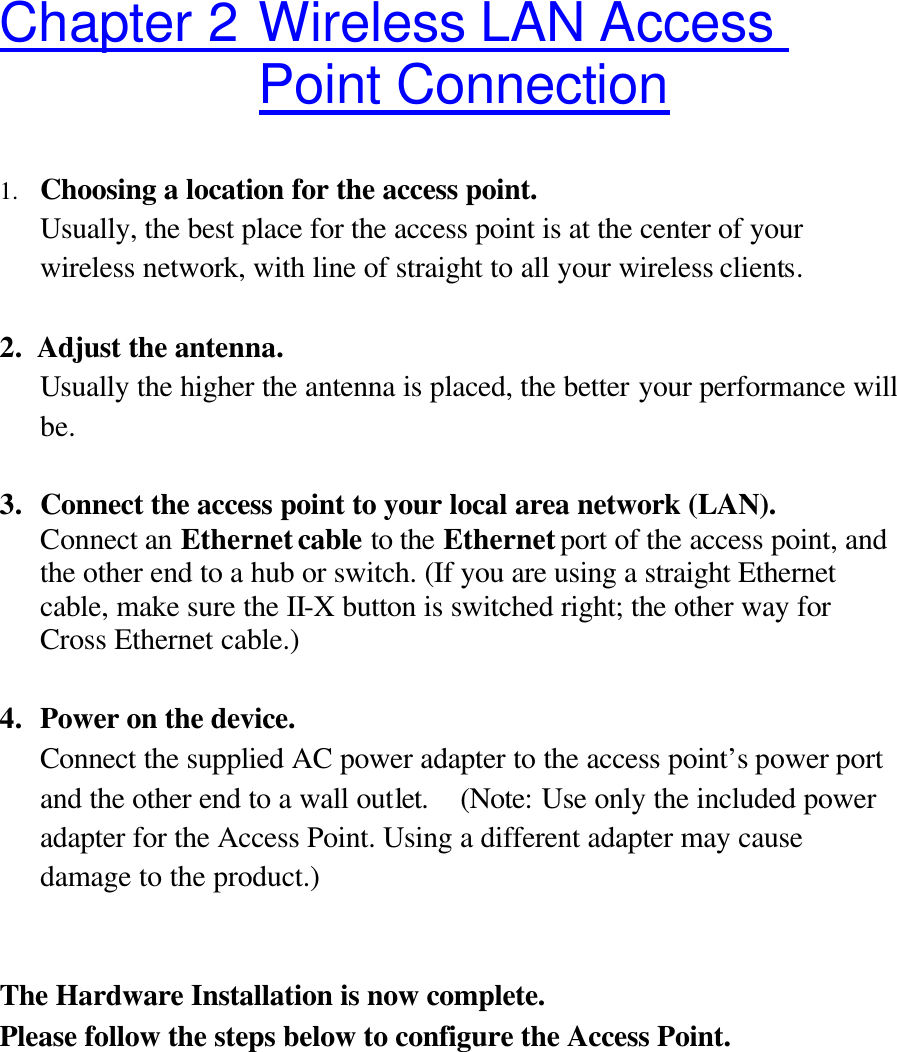
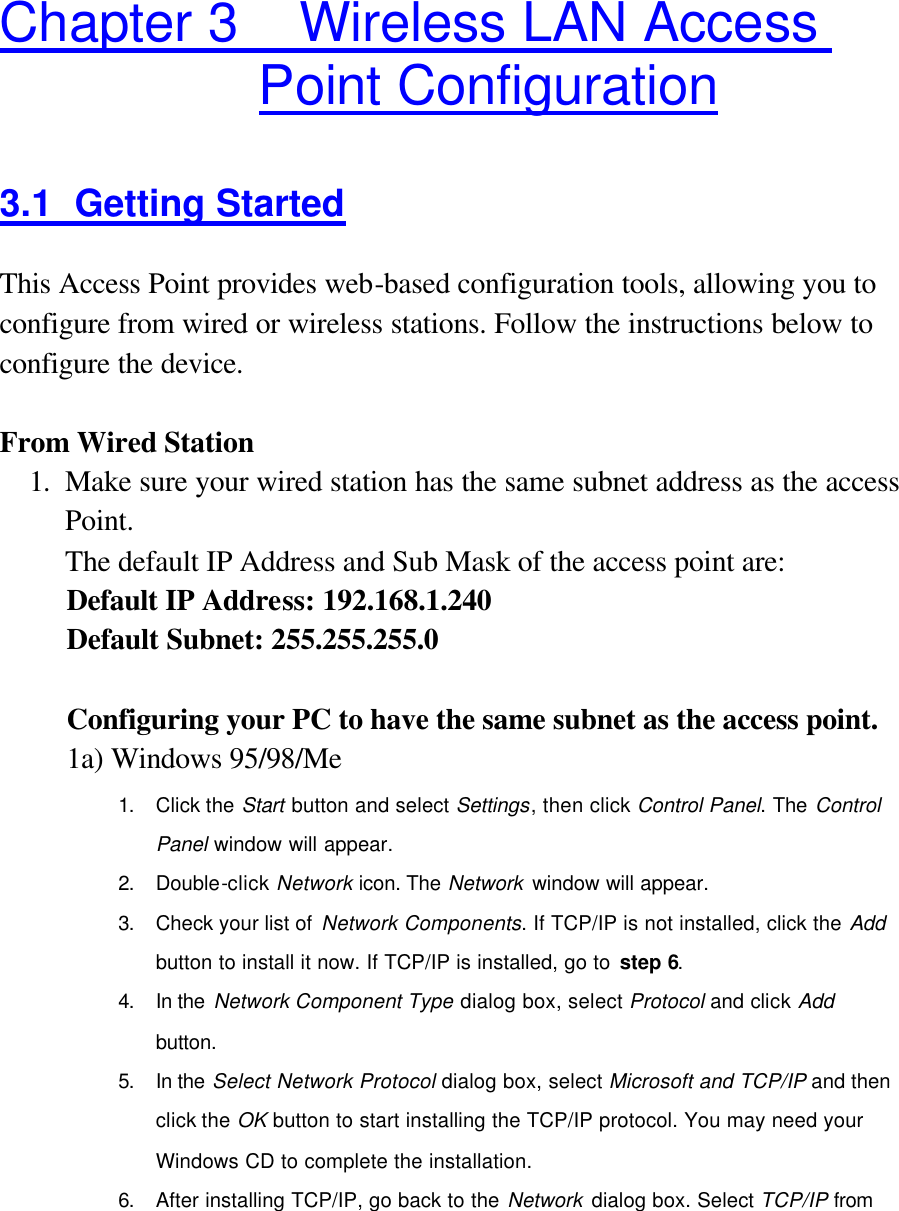
![the list of Network Components and then click the Properties button. 7. Check each of the tabs and verify the following settings: ? Bindings: Check Client for Microsoft Networks and File and printer sharing for Microsoft Networks. ? Gateway: All fields are blank. ? DNS Configuration: Select Disable DNS. ? WINS Configuration: Select Disable WINS Resolution. ? IP Address: Select Specify an IP Address. Specify the IP Address and Subnet Mask as following example. 1 IP Address: 192.168.1.3 (any IP address within 192.168.2.2~192.168.2.254 is available, do not setup 192.168.2.1) 2 Subnet Mask: 255.255.255.0 8. Reboot the PC. Your PC will now have the IP Address you specified. 1b) Windows 2000 1. Click the Start button and select Settings, then click Control Panel. The Control Panel window will appear. 2. Double-click Network and Dial-up Connections icon. In the Network and Dial-up Connection window, double-click Local Area Connection icon. The Local Area Connection window will appear. 3. In the Local Area Connection window, click the Properties button. 4. Check your list of Network Components. You should see Internet Protocol [TCP/IP] on your list. Select it and click the Properties button. 5. In the Internet Protocol (TCP/IP) Properties window, select Use the following IP address and specify the IP Address and Subnet mask as following. ? IP Address: 192.168.1.3 (any IP address within 192.168.1.2~192.168.1.239 is available, do not setup 192.168.1.1 or 192.168.1.240) ? Subnet Mask: 255.255.255.0 6. Click OK to confirm the setting. Your PC will now have the IP Address you specified. 1c) Windows NT](https://usermanual.wiki/Hawking-Technologies/HSB1.CRN-25109-user-manual-for-access-point/User-Guide-622370-Page-12.png)
